Hiring a car is not the only way to see Gran Canaria. I travelled the length and breadth of the island on its buses, which were comfortable, reliable and cheap.
Here’s all you need to know to explore Gran Canaria by bus.
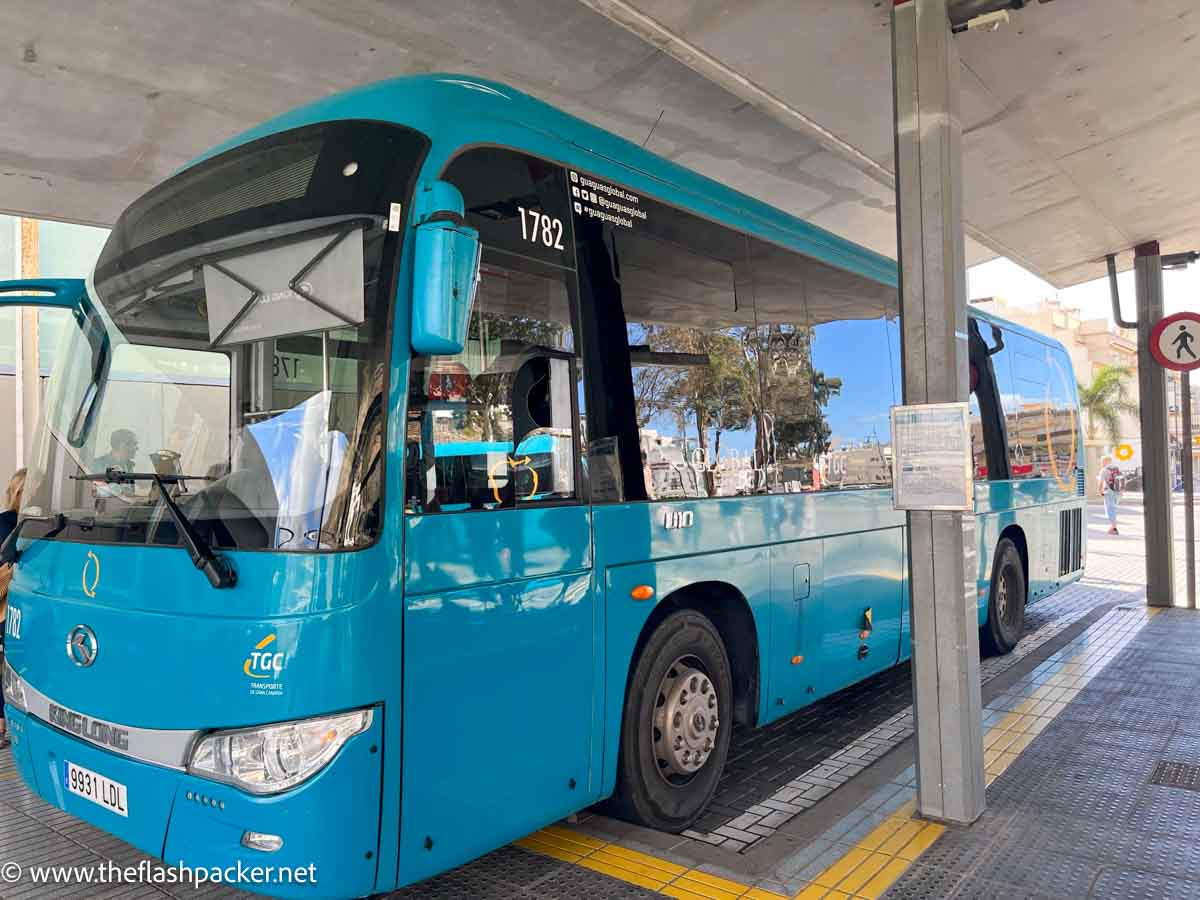
Public Transport in Gran Canaria
Bus services operated by Global reach most destinations on the island. It uses a modern fleet of shiny, blue buses.
Gran Canaria buses are clean and equipped with the latest safety technology and air conditioning. Additionally, the fleet is wheelchair accessible.
In many respects, buses are of a higher standard than those found in the UK.
Additionally, the yellow buses operated by Guaguas Municipales operate primarily in the island’s capital, Las Palmas.
Gran Canaria does not have a train service.
There is no luggage limit on the island’s bus services but even small bags and suitcases need to be placed in the hold. The driver unlocks this compartment on request. Bicycles and scooters can be carried in the baggage hold of Global’s buses.
Popular Gran Canaria Tourist Bus Routes
Buses to and from the airport
- 60 Las Palmas – Airport
- 1 Las Palmas – Airport – Puerto de Mogán
As this bus makes multiple stops, opt instead for the #91 if you are travelling between Las Palmas / Airport and Puerto de Mogán.
- 91 Las Palmas – Airport – Puerto de Mogán (express service)
- 5 Las Palmas – Airport– Bahia Feliz – Maspalomas
- 66 Airport – Bahia Feliz– Playa del Ingles– Maspalomas
- 11 Las Palmas – Airport – Aguimes
Other popular tourist bus routes
- 5 Las Palmas – Playa del Ingles – Maspalomas Lighthouse
- 30 Las Palmas – Maspalomas Lighthouse (direct service)
- 12 Las Palmas – Telde
- 21 Las Palmas – Aguimes
- 90 Telde – Maspalomas Lighthouse
You can look up Gran Canaria bus timetables here.
How to Buy Your Bus Ticket
Buy your bus ticket for a one-way journey from the driver. Both cash and contactless card payments, including those by smartphone, are accepted.
Try to have the exact change if you are paying for your ticket with cash. The driver will not give change from notes larger than €20.
When you board the bus, just let the driver know your destination and he/she will charge the corresponding fare. In return for handing over a small sum, you will be given a ticket that clearly states your destination. Hold onto your ticket until you disembark the bus.
Travel cards
Like bus services in Tenerife, a rechargeable payment card for Gran Canaria buses is available. This is called the Easy TransGC Card and more information is here.
However, applying for this card is time-consuming and involves verification of a photo ID. Card recharging and collection points are limited.
How Much is Gran Canaria Public Transport?
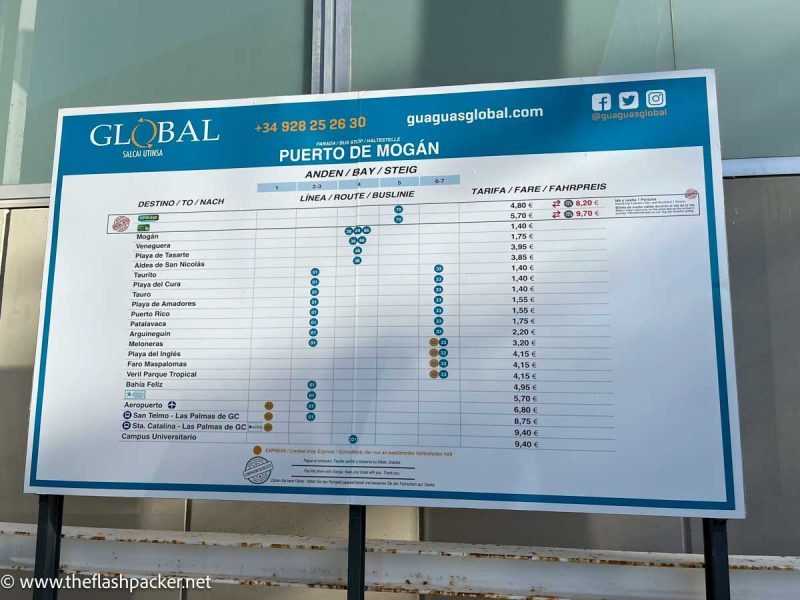
Using buses on the island is very affordable. The price of your bus fare depends on the route and how far you are travelling. You can check the latest fares here.
For example; in 2023, it cost me €4.15 to travel from Puerto de Mogán to Maspalomas Lighthouse and €8.75 to get from Puerto de Mogán to San Telmo Station in Las Palmas.
A day trip to Teror from Las Palmas set me back less than €5.
Tips for Using Gran Canaria Buses
1. Plan your route with Google Maps or Moovit
Global’s website is the place to go for looking up bus timetables and it also has a route search function. However, in my experience, a combination of Google Maps and Moovit was more useful to plan journeys
For planning on the go, Global also has an app. You can download this app for Android devices here or via Apple Store here.
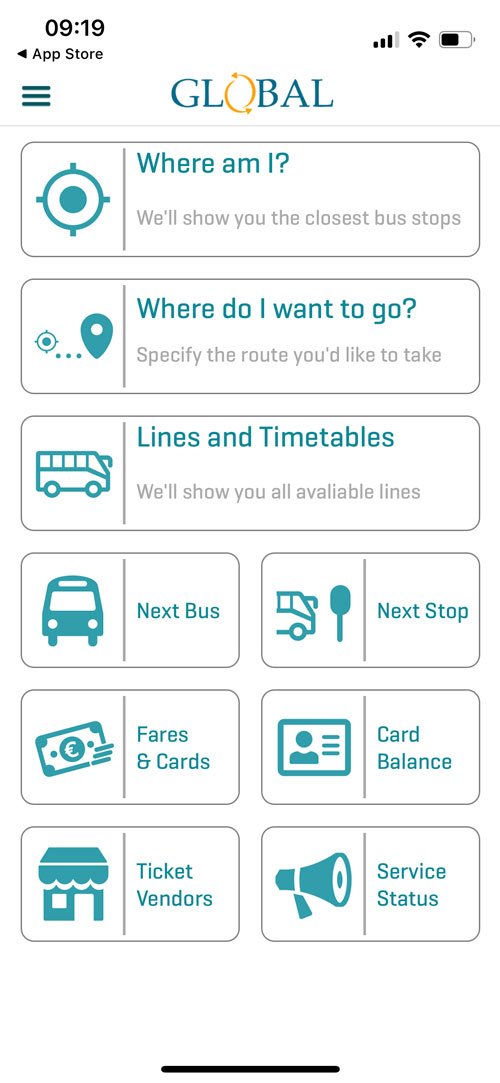
2. Expect buses to be busy
It is not just tourists who use public transport in Gran Canaria. Bus services are heavily used by locals and visitors alike.
Make sure that you arrive before the bus’s scheduled departure time to bag your place in the queue. On more than one occasion I witnessed people standing for the length of their journey.
If possible, try to board the bus close to the beginning of the route
3. Enter the bus through the front door and exit through the rear door
4. Press the stop button as you are approaching your destination
5. Don’t place your faith in the information screen on the bus
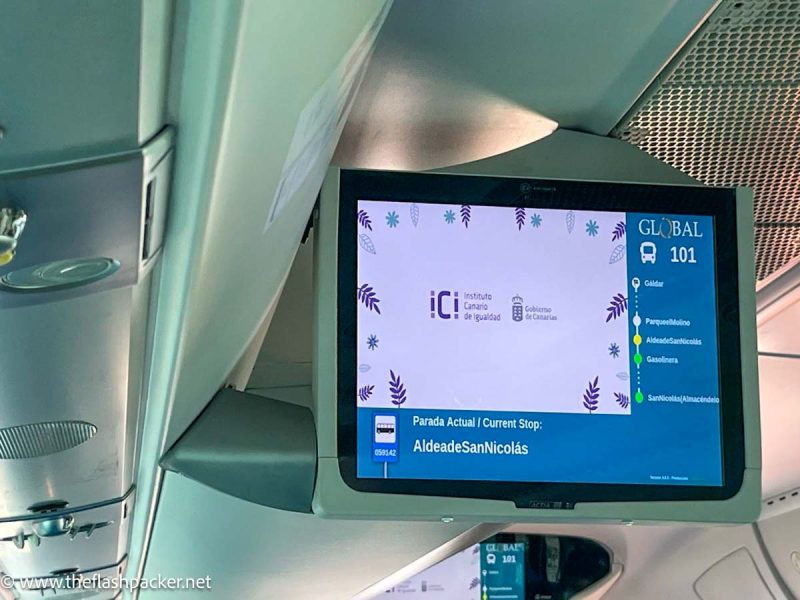
Most (but not all) buses in Gran Canaria will have two information screens, one near the driver and a second by the exit door.
As much of the screen’s real estate is given over to rolling adverts, the next station and route information is squished into a small section of the screen. If you are unsure of the route, place yourself strategically near the screen or bring binoculars.
Also, pray that the information screen is working. I was caught out on one journey when the screen was not in the best of health and, as a result, missed my stop.
6. Pick the right station in Las Palmas
Las Palmas has two bus stations.
San Telmo – the busier and bleaker of the capital’s bus stations, this is close to the Old Town (Vegueta and Triana). It reminded me of Luton bus station in the 1980s minus the crowds.
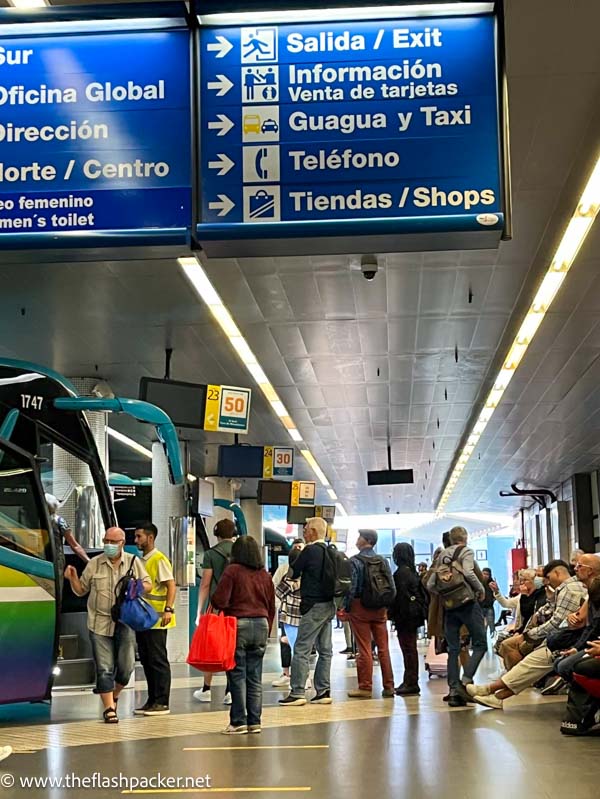
Santa Catalina – this shiny and modern terminus serves the marina and Playa de Canteras.
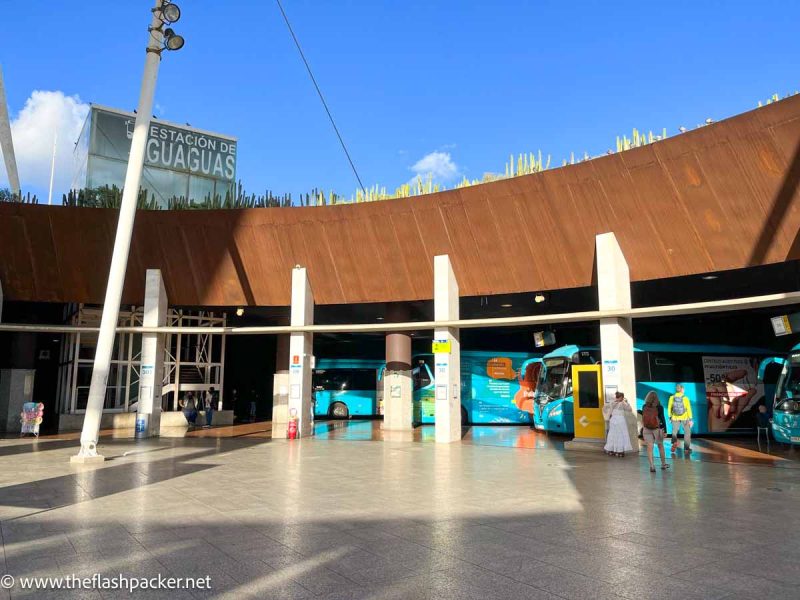
Where to Stay in Gran Canaria Without a Car
If you are not hiring a car in Gran Canaria, the best base is the island’s lovely capital, Las Palmas. As well as being Gran Canaria’s main public transport hub, Las Palmas has a charming old town and is close to the airport.
With fast and frequent bus services, one of the main resorts in the south of the island is also a good bet. For example; from Maspalomas, you can be in Las Palmas in under an hour.
I split my vacation in two, staying in Puerto de Mogán in the south for five days before moving to Las Palmas. This was a perfect combination
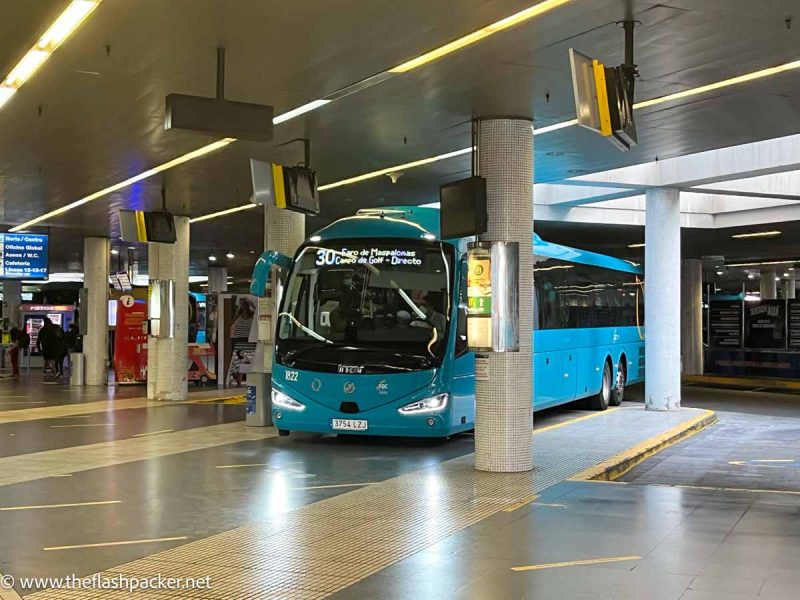
My Experience of Getting Around Gran Canaria by Bus
Getting around by bus was an easy and affordable way of seeing the island, especially as I was travelling alone to Gran Canaria. It removed the stress of driving and parking and, in a small way, I did my bit towards preventing climate change.
Apart from the lack of flexibility, the only other disadvantages of exploring Gran Canaria by bus were the infrequency of some schedules and a lack of direct routes to some destinations, necessitating a change of bus. However, with a little planning, I overcame these disadvantages.
If you would like to know more about travel in Gran Canaria, take a look at my other articles:
- Gran Canaria Solo Travel: Itinerary & Essential Guide
- 10 Amazing Things to See in Las Palmas Old Town in One Day
- Top 10 Things to Do in Puerto de Mogán: Gran Canaria’s Little Venice
- The Ultimate Guide to Agüimes, Gran Canaria: All You Need to Know!
- Top 10 Things to See in Arucas, Gran Canaria: The Ultimate Guide
- The Ultimate Guide to Teror, Gran Canaria: Nothing to Fear!

About Bridget
Bridget Coleman has been a passionate traveller for more than 30 years. She has visited 70+ countries, most as a solo traveller.
Articles on this site reflect her first-hand experiences.
To get in touch, email her at hello@theflashpacker.net or follow her on social media.
